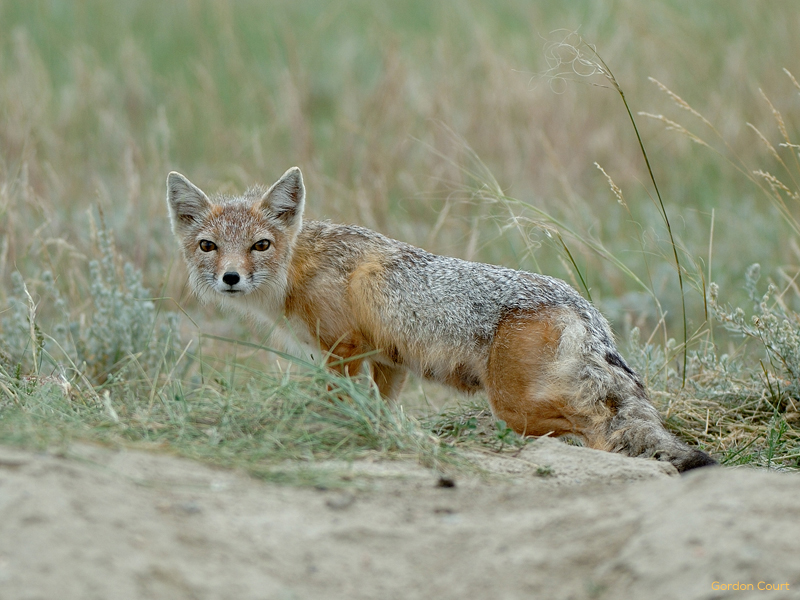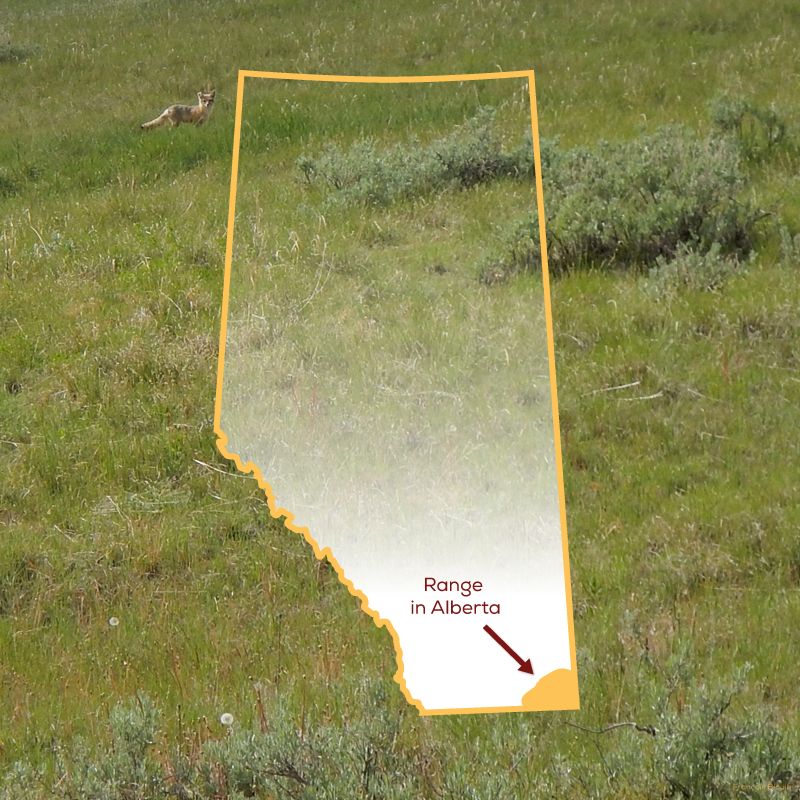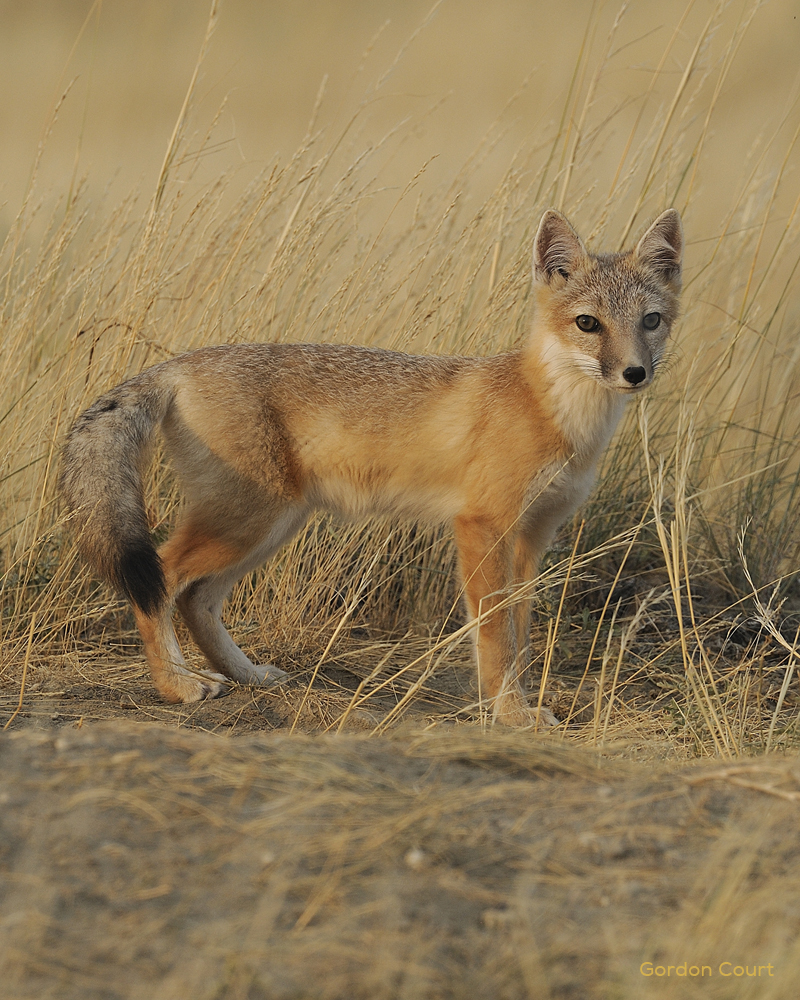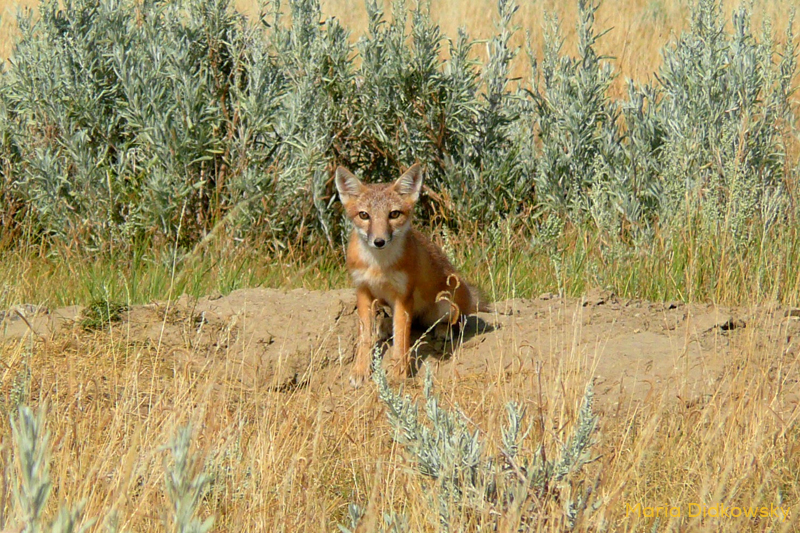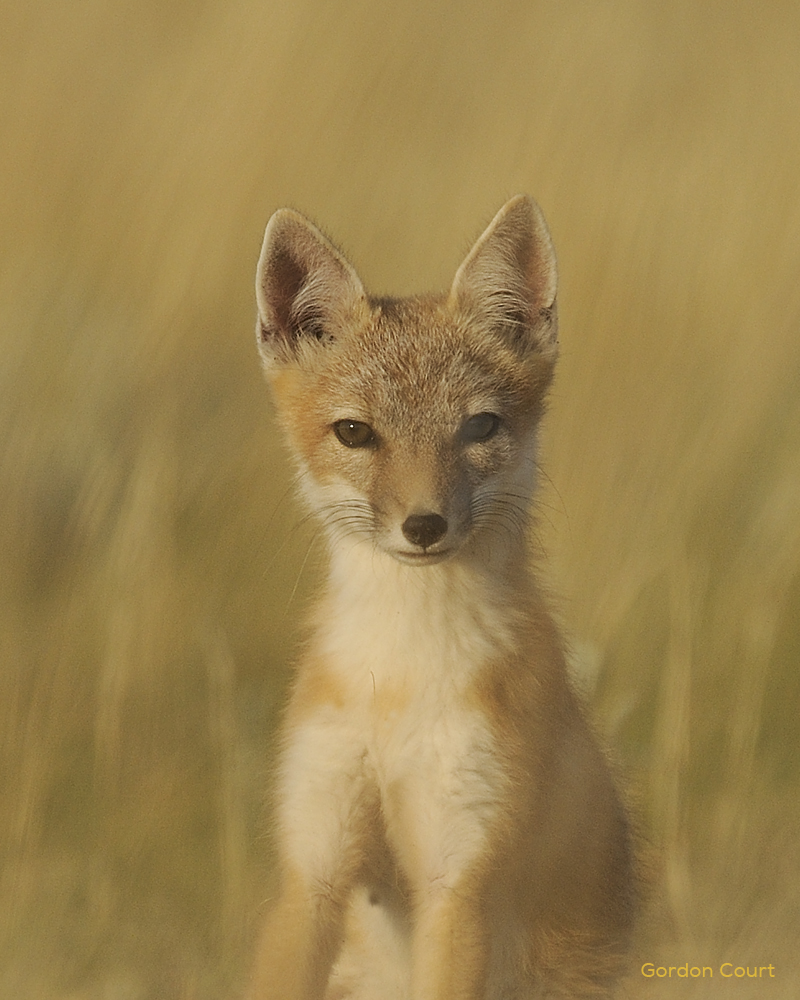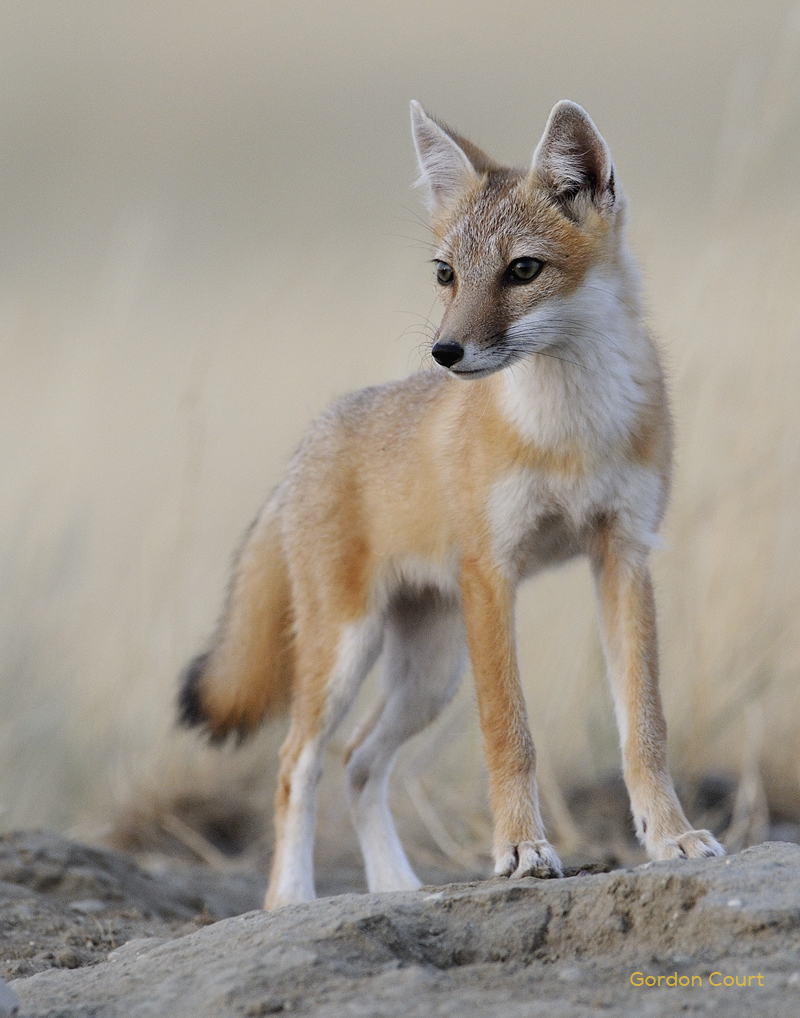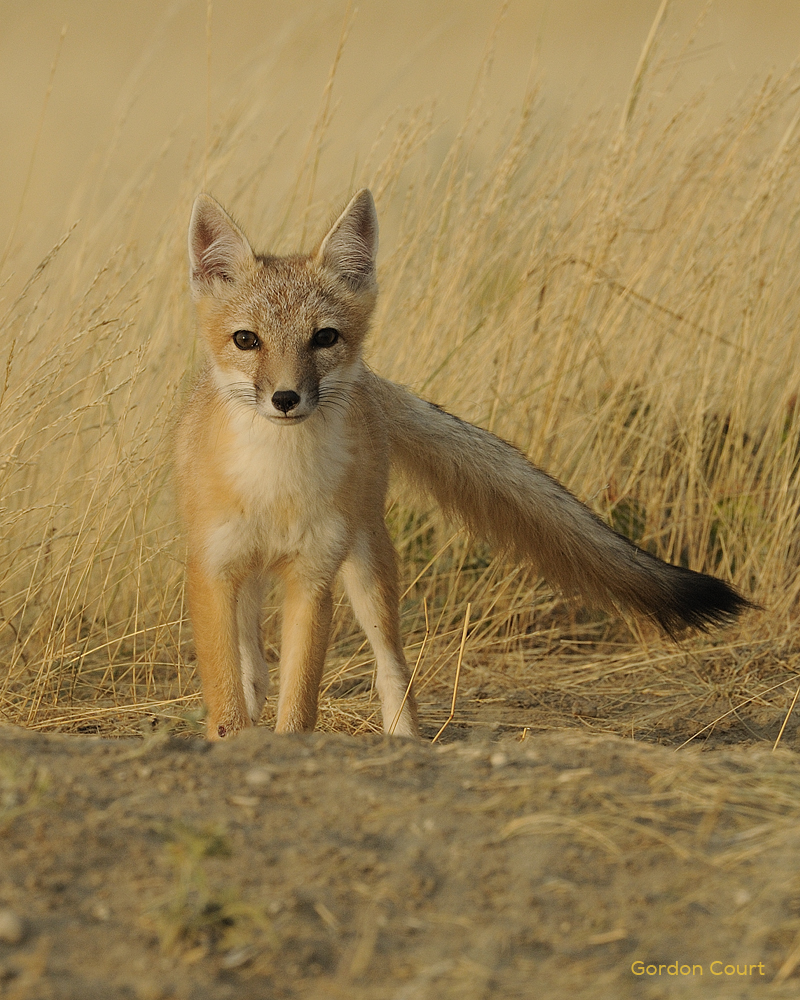SWIFT FOX
Vulpes velox
Small and Speedy
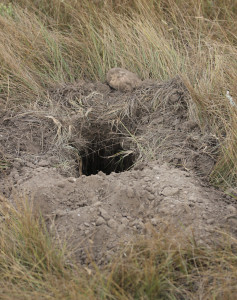
The smallest of North America’s wild dogs, Swift Foxes weigh the same as an average house cat (2-3 kg). As their name suggests, they can run very fast and have been recorded moving at over 60km/hr.
Safety Underground
Swift Foxes sometimes use old badger burrows to raise their young and for shelter throughout the year, but they will also dig their own.
Dog Eat Dog
Their canine relatives, Coyotes, are the primary predator that Swift Foxes have to worry about.
Population
Swift Foxes became extirpated in Alberta in the 1930s through a combination of factors including trapping, hunting and loss of grasslands with the expansion of agriculture.
A total of 540 foxes were re-introduced to Alberta between 1983 and 1996. The reintroduction program has had its ups and downs, but there are now approximately 500 wild born foxes thriving in southeastern Alberta and southwestern Saskatchewan.
Current Threats
- Loss and fragmentation of their natural habitat by agricultural and industrial activities.
- Road mortality is also another important factor, as Swift Foxes frequent roadways at night.
- Competition with and predation by coyotes.
- Disease outbreaks such as canine distemper and canine parvovirus could affect this small population of wild foxes.
- Pesticide use and over-grazing can reduce their prey (mice, grasshoppers).
- Trapping and poisoning programs targeted at coyotes, skunks and other mammals may indirectly affect Swift Foxes.
Species@Risk Quiz
Test your knowledge about Alberta’s grassland species at risk
Swift Fox
Question 1 |
Swift Foxes prefer to live in areas of short vegetation because:
They enjoy strong winds | |
They can see long distances to watch for predators and prey | |
They can run faster without tripping |
Question 2 |
Swift Foxes main food source is:
Coyotes and Golden Eagles | |
Ground squirrels, mice and grasshoppers | |
Grass seeds and roots |
Question 3 |
How many Swift Foxes are currently living in Alberta and Saskatchewan?
Fewer than 50 | |
Approximately 500 | |
Over 2000 |
Question 4 |
Swift Foxes raise their young in:
Abandoned buildings | |
Underground burrows | |
Tall prairie grasses |
Public
- Report Swift Fox observations to the Environment and Sustainable Resource Development area biologist.
- Drive cautiously at night in areas known to be home to Swift Foxes in southeastern Alberta.
- Avoid disturbing den sites, especially during the breeding season (spring and summer).
- Avoid taking your dog to areas that are home to Swift Foxes.
- Support native grassland habitat by choosing grass-fed meat in the grocery store.
- Voice your support for native grassland conservation with your political leaders.
- Educate yourselves and your family about Swift Foxes and their role in the grassland ecosystem.
Landowners
- Report Swift Fox observations to the Environment and Sustainable Resource Development area biologist.
- Hang on to your native grasslands and keep them healthy.
- Avoid indiscriminate predator control methods that might impact the Swift Fox.
- Avoid disturbing den sites, especially during the breeding season (spring and summer).
- Adopt land management practices that support healthy prey populations (ground squirrels, small rodents and insects).
- Allow an acceptable level of burrowing mammals (e.g., badgers) to coexist on your land, as they provide burrows for the den-dependent Swift Fox.
- Consider restoring some of your degraded grasslands or marginal croplands with native vegetation typical of your area.
- Remove old buildings and consult with a wildlife biologist on the potential benefit of removing old shelterbelts that may attract competitors of the Swift Fox in your native grassland.
- Contact MULTISAR to discuss what management practices might be beneficial to the Swift Fox on your property.
What MULTISAR Does
- Develops habitat conservation strategies and conducts surveys and monitoring of Swift Fox populations with collaborating ranchers to increase our knowledge of the species’ distribution, relative abundance and population trends.
- Works with landowners to develop voluntary practices that protect den sites and promote habitat and prey populations suitable for Swift Foxes.
- Assists landowners in restoring some of their degraded grasslands and converting marginal croplands back to native grassland vegetation.
- Educates the public about Swift Foxes, their habitat requirements and appropriate management practices.
